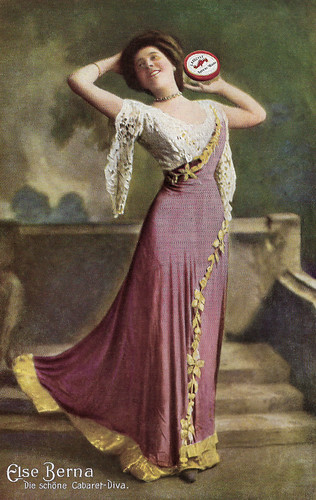
German postcard by Richard Laibisch & Co., Berlin for Gargoyle Bohner-Wachs. Photo: Ernst Schneider, Berlin NW. Caption: Else Berna. Die schöne Cabaret-Diva.

Austrian postcard by Rotophot - S. Blueh, Wien (Vienna), no. 565/66.
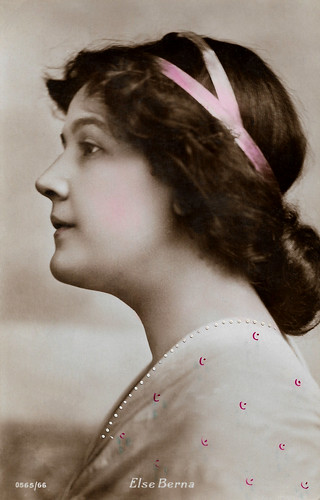
French postcard by P.C.M., no. 0565/66. (P.C.M. was possibly a French affiliate of Rotophot. See the style and numbering of the card below by Rotophot's Austrian affiliate Rotophot - S. Blüh, Wien). Sent by mail in 1909.
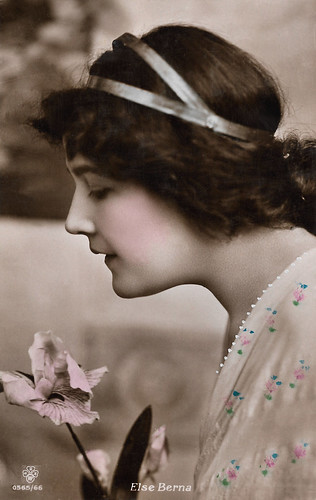
Austrian postcard by Rotophot - S. Blüh, Wien, no. 0565/66.
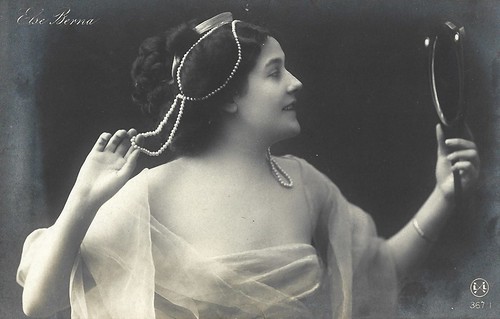
German postcard by L. L. (L. Langebartels, Berlin), no. 367/1.
Lubitsch and Murnau
Else or Elsa Berna was born as Elsa Dörffel in 1886 in Dresden, Germany. She was the daughter of shoemaker Edmund Dörffel and his wife Christiane, née Jahn. In 1902. she made her stage debut under her own name at the Residenz Theater in her native Dresden. Then she moved to Berlin, where she began training as an opera singer with Emmy Raabe-Burg at the Stern Conservatory.
On the net, there are plenty of photos of her, which were made for German magazines. In 1908, she appeared alongside Claire Waldoff and Fritz Grünbaum in the ensemble of the cabaret Chat Noir. She was cast in larger roles at the Nollendorf Theatre, the Wintergarten, the Theater des Westens, the Metropol Theatre and the Wallner Theatre, where she appeared in both classical stage plays and operettas. On the occasion of an appearance in the Oscar Straus operetta 'Venus im Grünen', the press indicated that she had been the star of such plays as 'Prinzess Gretl' (1914) by Heinrich Reinhardt and such revues as 'Die Welt ohne Schleier' at the Komische Oper in Berlin in 1923. There are also photos in which she poses for fashion magazines or in which she shows her luxurious apartment in Berlin.
The cinema must have been a logical next step in her career. Else Berna made her film debut with the lead role in the social drama Tuberosen (Josef Stein, 1917). It was followed by another leading role in Der König ihres Herzens/The King of Her Heart (Ludwig Trautmann, 1918).
Among her other films are Ernst Lubitsch's Madame DuBarry (1919) starring Pola Negri and Emil Jannings, and Freie Liebe/Free Love (Max Mack, 1919). She also appeared in Friedrich Wilhelm Murnau's lost film Satanas/Satan (1920). In this three-part historical film, she played Lucrezia Borgia. Only a brief fragment of the first episode taking place in ancient Egypt has been found.
Although the most successful phase of her stage and film career was between 1917 and 1924, she remained active on the stage until shortly before her early death, appearing in Berlin in particular, but also in Vienna. She had one of her last roles in 1934 at the Vienna Scala in the comedy operetta 'Lieber reich - aber glücklich' alongside Otto Wallburg, Harry Giese, Ery Bos and Baby Gray. She passed away in 1935 in Berlin, Germany.
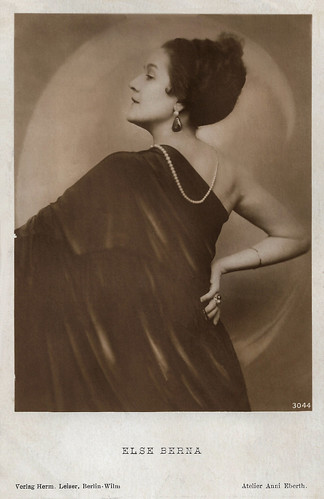
German postcard by Verlag. Herm. Leiser, Berlin-Wilm., no. 3044. Photo: Atelier Anni Eberth.
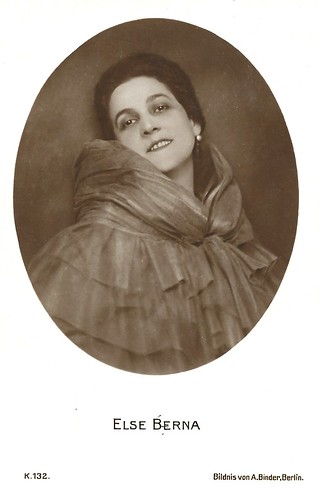
German postcard [by Photochemie, Berlin], no. K.132. Photo.: A(lex) Binder, Berlin.
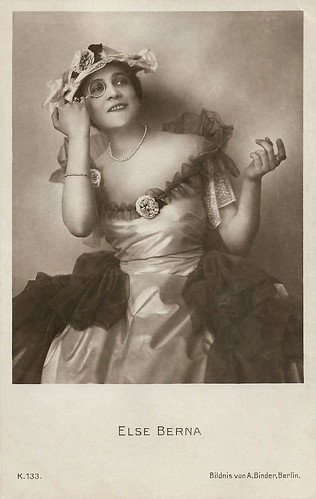
German postcard by Photochemie, Berlin, no. K. 133. Photo: A(lex) Binder, Berlin.
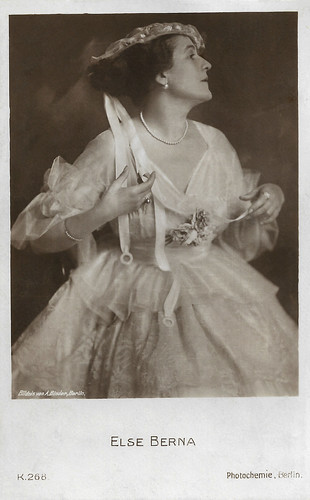
German postcard by Photochemie, Berlin, no. K. 268. Photo: A. Binder, Berlin.

German postcard by Photochemie, Berlin, no. K. 1552. Photo: Rudolph Dührkoop, Berlin.
Sources: Thomas Staedeli (Cyranos), Getty Images, Wikipedia (German) and IMDb.
No comments:
Post a Comment